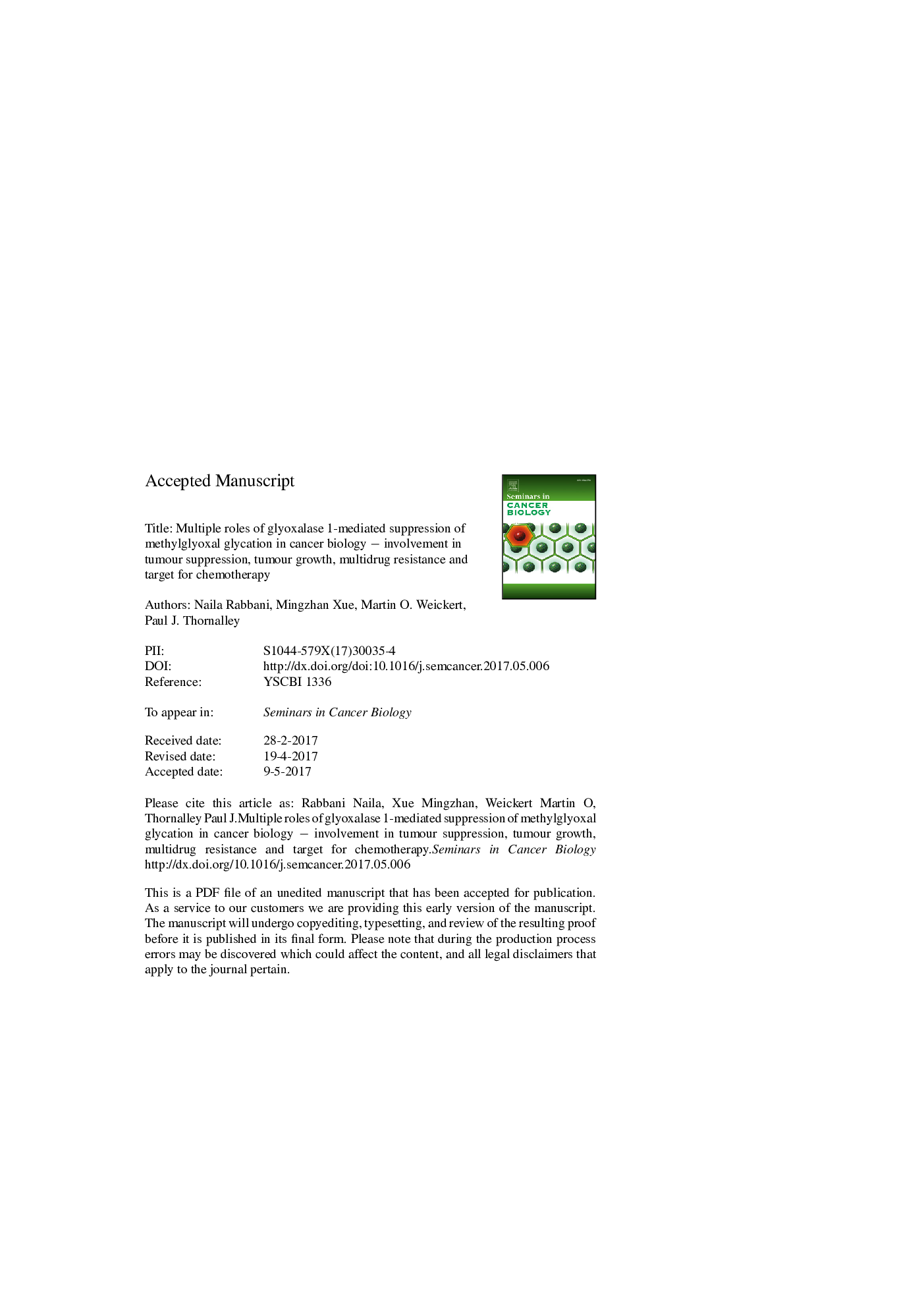| Article ID | Journal | Published Year | Pages | File Type |
|---|---|---|---|---|
| 8361775 | Seminars in Cancer Biology | 2018 | 50 Pages |
Abstract
Glyoxalase 1 (Glo1) is part of the glyoxalase system in the cytoplasm of all human cells. It catalyses the glutathione-dependent removal of the endogenous reactive dicarbonyl metabolite, methylglyoxal (MG). MG is formed mainly as a side product of anaerobic glycolysis. It modifies protein and DNA to form mainly hydroimidazolone MG-H1 and imidazopurinone MGdG adducts, respectively. Abnormal accumulation of MG, dicarbonyl stress, increases adduct levels which may induce apoptosis and replication catastrophe. In the non-malignant state, Glo1 is a tumour suppressor protein and small molecule inducers of Glo1 expression may find use in cancer prevention. Increased Glo1 expression is permissive for growth of tumours with high glycolytic activity and is thereby a biomarker of tumour growth. High Glo1 expression is a cause of multi-drug resistance. It is produced by over-activation of the Nrf2 pathway and GLO1 amplification. Glo1 inhibitors are antitumour agents, inducing apoptosis and necrosis, and anoikis. Tumour stem cells and tumours with high flux of MG formation and Glo1 expression are sensitive to Glo1 inhibitor therapy. It is likely that MG-induced cell death contributes to the mechanism of action of current antitumour agents. Common refractory tumours have high prevalence of Glo1 overexpression for which Glo1 inhibitors may improve therapy.
Related Topics
Life Sciences
Biochemistry, Genetics and Molecular Biology
Biochemistry
Authors
Naila Rabbani, Mingzhan Xue, Martin O. Weickert, Paul J. Thornalley,
